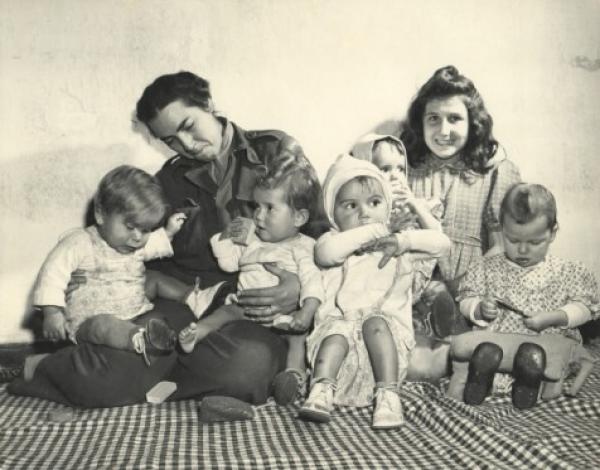CHGS Director Alejandro Baer has written about the analogies drawn between refugees fleeing Nazi Germany in 1938 and the current global refugee crisis. The ease in which comparisons are made between those who fled World War II and those fleeing the atrocities committed by ISIS and other groups is made stronger by the widely circulated images of refugees we see on a near-daily basis.

The ways displaced people are presented through visual media can bring awareness to the situations of victims of atrocities. As discussed on this blog recently, picturing a victim in a photograph carries with it a host of important considerations, including whether and how the voice of the subject is taken into account in distributing their image. The voice, as it were, of the photographer may not be apparent when one glimpses a photograph. Photography can mask the intent of the photographer by creating what is a seemingly objective snapshot of real events (unlike the hand of a painter whose brush strokes reveal their subjectivity).
CHGS has in its collections a series of photographs taken in 1945-1946 by Maxine Rude, photographer for the US Army and the United Nations Relief and Rehabilitation Administration (UNRRA). These photos were part of an extensive collection organized by Stephen Feinstein, the Center’s founder, entitled, “Displaced: Europe 1945-1946,” which is available as a catalogue from a previous exhibition.
CHGS is pleased to present a newly curated exhibition, entitled “Displaced: Photos and Remembrances of Maxine Rude, 1945-1946,” selected from this larger series. On display in the Eiger-Zaidenweber Holocaust Resource Center at the Sabes JCC, this exhibition is open and available for visitors.
The more than forty photographs currently on display have been grouped by apparent theme and photographic subject, including photos of politicians visiting DP camps, the camps’ structure and function, and evidence of daily life lived by displaced persons, all as captured by Maxine Rude.
As curators of another person’s body of work, we are intentionally aware that our decisions affect the viewer’s experience. By choosing to arrange works according to the subjects within the images, we are like any visitor to the exhibition, acutely aware that we don’t have the curatorial input of Maxine Rude herself. We are fortunate to have some commentary written by her, and this important contextualizing information is presented online (in the description field of associated photos), as well as being included in exhibition materials onsite in the Eiger-Zaidenweber Holocaust Resource Center.
In related upcoming posts, we’ll delve deeper into some of the subjects in the photos, as well as learn more about the experience of displaced persons following World War II and the Holocaust.
Demetrios Vital is Outreach Coordinator for the Center for Holocaust and Genocide Studies. In this role he is responsible for the care and promotion of CHGS art and object collections, as well as working with the community in the development of programs, activities, and events.

Comments 3
Photographing Displaced Persons: Then and Now - Center for Holocaust & Genocide Studies — March 20, 2017
[…] our post on the photography of Maxine Rude – on display in the Eiger-Zaidenweber Holocaust Resource […]
Capturing Every Day Life in Conflict - Center for Holocaust & Genocide Studies — April 3, 2017
[…] such images before. CHGS has in its collection 69 original photographs taken by Maxine Rude of the daily life of survivors in Displaced Persons camps established in Germany and Austria at the end of World War […]
Unearthing Yiddish Archival Objects - Center for Holocaust & Genocide Studies — August 3, 2021
[…] unsure based on the limited captioning of the photograph. Professor Alejandro Baer, CHGS Director, has also written about the challenges prior curators faced with this collection, namely: what subject(s) appear? […]